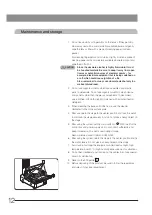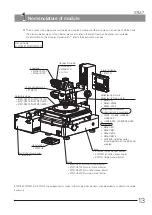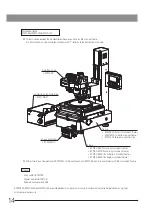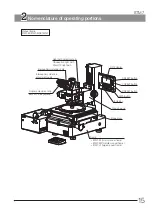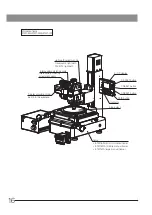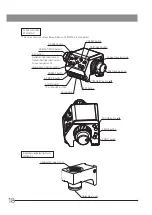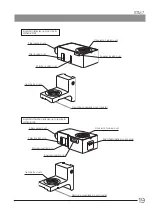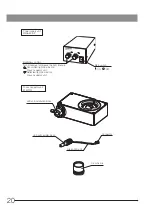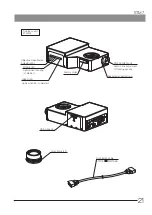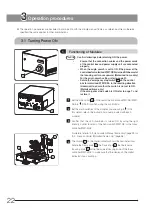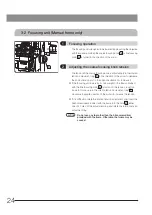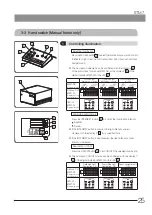
10
3. Focusing is possible on specimens with reflectance of glass to mirror.
However, it is difficult for the reticle to be able to be seen with the
specimens with very irregular surface (surface of a plastic mold, etc.)
4. The brightness of the reticles both top and bottom might be varied.
However, there is not a problem in case of use.
5. The reticle might shift from center of the eyepiece. However, there is
no problem in case of use.
6. According to the combination of the light source, there is a
difference in the light of the reticle. However, there is no problem in
case of use.
7. Contact lens wearer have the possibility to influence the focusing
repeatability. The naked eye is recommended.
8. Depending on the specimen, the reticle may be visible even in an
out-of-focus position. So be careful.
9. When this unit is installed, it may affect the observations as
described below.
• When this unit is combined, the periphery of the observation
field of view may become dark. If this bothers you, replace the
cross-frame part of the eyepiece with that provided with this
unit (page 34).
• Because the observation luminous energies decreases with
this unit, the reflected light DIC observation cannot be used.
Rotatable stage
1. Do not attach the rotatable stage on the stage by reversing front
and back, right and left, and up and down.
2. Use the fine focusing knob (lower right area of the stage top
surface) to rotate the rotatable stage. Do not rotate the rotatable
stage with your hands.
3. Do not rotate the fine focusing knob when the rotatable area is fixed.
4. During carrying the rotatable stage, tighten the rotation clamp knob
(lower left area on the stage top surface) to secure the rotatable area.
5. When carrying the rotatable stage, hold it by putting your hand on
the groove on the side surface of the base of the rotatable stage.
Do not hold any other parts.
Digital camera
1. Use the USB cable provided with the digital camera.
2. Do not connect to ports other than the USB 2.0 port complied with
ENCI (Enhanced Host Controller Interface) standard of the controller.
Otherwise, the operations are not ensured.
3. If the digital camera is used in a high temperature environment, the
noise on the image will be increased.
4. Using the digital camera will increase the load on the controller. The
longer the camera exposure time is, the slower the frame rate and
the application operations become.
(When using the microscope digital camera, refer to the instruction
manual provided with DP22/DP27.)
Autofocus unit
} Refer to the instruction manual provided with the autofocus unit.

















